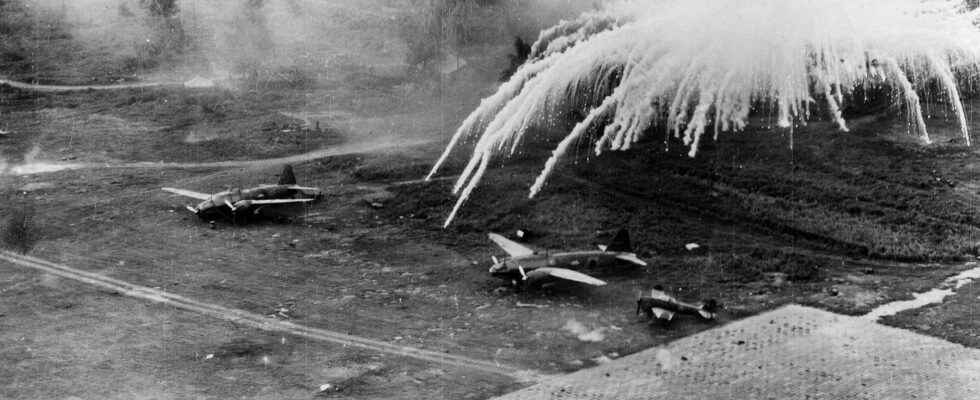Ukrainian authorities accuse Russia of having used white phosphorus ammunition on March 23 in a municipality near Kyiv. White phosphorus is an incendiary and corrosive chemical element, the use of which regularly provokes reflections on chemical weapons treaties.
You will also be interested
[EN VIDÉO] Chemistry: top 5 of the most spectacular reactions Chemistry is a fantasy world. It is sometimes enough to mix a few products to generate precipitates, color changes and sometimes even explosions… Put on your blouse for a video tour in the world of chemical reactions.
Has Russia just taken a new step in its military offensive against Ukraine? Igor Kossov, journalist at Kyiv Independentreported on March 23 that the municipality of Irpin, a few kilometers northwest of Kyiv, had suffered an attack in white phosphorus. On March 24, the Ukrainian ambassador to France claimed on the BFMTV set that white phosphorus had been used in other cities in the country, in particular Izioum, located between Kharkiv and Donetsk, in the East. The use of white phosphorus is debated. If the item is not prohibited or even considered a armed chemical according to Chemical Weapons Convention (CWC, Chemical Weapons Convention), its effects on populations can be particularly terrible, as white phosphorus can be incendiary and corrosive.
According to the mayor of Irpin, Russians used white phosphorus in the area last night. This is the start of something really fucking disgusting. pic.twitter.com/EUVgzWLW0x
— Igor Kossov (@IgorKossov) March 23, 2022
White phosphorus: a strategic asset?
White phosphorus is a derived element, or allotrope, phosphorus. With a yellowish appearance, it can ignite on contact with air, reaching a temperature of approximately 800°C, and its vapors formed of phosphoric acid are corrosive, causing significant damage to organic tissue up to third degree burns. The first uses of white phosphorus by conventional armies date from the First World War, in 1916. During the following decades, many countries were equipped with white phosphorus ammunition, the latter being able to be used as smoke due to the strong quantity of vapor being released from it. Their incendiary ability can sometimes light up land nocturnal.
Since the beginning of the XXand century, white phosphorus was used in many theaters of conflict: during the Second World War, the wars in Korea and Vietnam, the first war in Afghanistan. White phosphorus ammunition has acquired a (bad) reputation in recent years during events such as the First Battle of Fallujah in 2004, during which the US military was accused of using this ammunition in incendiary form against insurgents. In 2009, Israel was singled out for using white phosphorus in the Gaza Strip, while in 2017, the anti-Daesh coalition will have recourse to the allotrope several times during the battles of Mossul (Iraq) and Raqqa (Syria).
A red line… and gray
If the characteristics mentioned above may suggest that white phosphorus is classified as a chemical weapon, this is not the case. The use of white phosphorus is perfectly legal and is not within the scope of Chemical Weapons Conventionratified in 1993. On the other hand, the protocol III of the Convention on Certain Conventional Weapons (CCW, Convention on Certain Conventional Weapons, which entered into force in 1983) prohibits the use of white phosphorus in the form of an incendiary bomb against civilian populations or military targets. The only possibilities of use: in the form of smoke or illuminating ammunition.
While Russia is suspected of fomenting a chemical attack in Ukraine, the use of white phosphorus bombs as pointed out by Ukrainian diplomats would constitute a war crime. Since the start of the invasion in Ukraine on February 24, 2022, Russian forces have committed numerous abuses, such as the bombing of hospitals, considered a war crime under Article 18 of the Fourth Geneva Convention. The International Criminal Court opened on March 2 investigation about the misdeeds of the russian army over the past four weeks.
Interested in what you just read?
